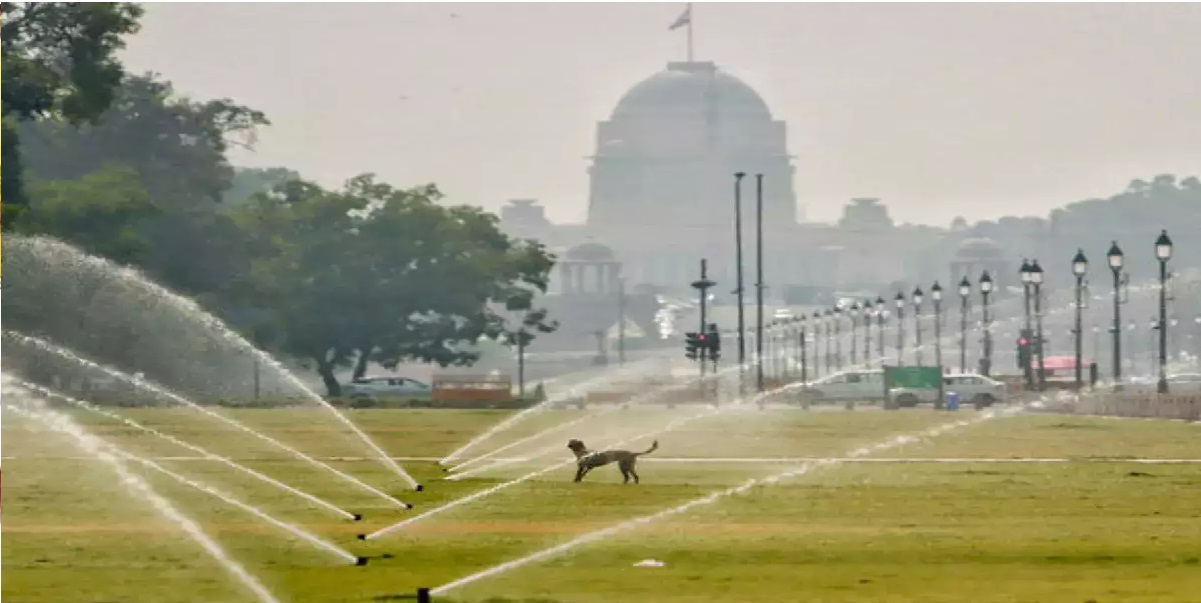North India is currently grappling with an intense heatwave, with temperatures soaring to unprecedented levels. The national capital, Delhi, recorded a scorching 47°C, making it one of the hottest places in the region. This severe heatwave has not only disrupted daily life but also raised serious concerns about health and safety among the population.
Heatwave Intensifies Across North India
The heatwave conditions have affected several northern states including Rajasthan, Uttar Pradesh, Punjab, and Haryana. In Rajasthan, cities like Jaipur and Jodhpur have experienced temperatures exceeding 45°C. Similarly, Agra in Uttar Pradesh and Ludhiana in Punjab have reported temperatures close to 46°C, exacerbating the distress among residents.
Impact on Daily Life
The extreme heat has led to significant challenges in everyday life. Schools in many affected areas have either been closed or have shifted to early morning timings to avoid the peak heat of the day. Outdoor workers, including laborers and farmers, are facing severe hardships, with many reports of heatstroke and dehydration. The healthcare system is also under strain, as hospitals see an influx of patients suffering from heat-related illnesses.
Electricity consumption has surged due to the increased use of air conditioning and cooling devices, leading to frequent power outages in some regions. Water scarcity is another critical issue, as the demand for water has skyrocketed, and many areas are struggling to maintain adequate supply.
Health Advisories and Precautions
The Indian Meteorological Department (IMD) has issued health advisories urging people to stay indoors during peak afternoon hours, remain hydrated, and avoid strenuous activities. Public health officials recommend the use of lightweight, loose-fitting clothing and the consumption of oral rehydration solutions to combat dehydration.
Relief Efforts and Government Response
In response to the heatwave, local governments have set up cooling centers in urban areas to provide respite to those without access to air conditioning. These centers are equipped with fans, cold water, and medical assistance to help people cope with the extreme temperatures.
IMD Predicts Rain Relief for South India
Amidst the scorching conditions in the north, the IMD has forecasted a contrasting weather pattern for South India. States like Kerala, Karnataka, and Tamil Nadu are expected to receive significant rainfall in the coming days. This is due to the onset of the southwest monsoon, which typically brings substantial relief from the summer heat.
The IMD’s prediction includes heavy to very heavy rainfall in some areas, which could lead to localized flooding. However, this rain is anticipated to provide much-needed respite from the rising temperatures and improve water availability in these regions.
Preparing for the Monsoon
Southern states are preparing for the monsoon season by clearing drainage systems, reinforcing embankments, and ensuring the readiness of disaster response teams. The agricultural sector, which heavily depends on monsoon rains, is also gearing up for the planting season, with farmers eagerly awaiting the rains to sow their crops.
Conclusion
As North India endures a relentless heatwave with temperatures peaking at 47°C in Delhi, the forecast of rain relief for South India brings a glimmer of hope amidst the scorching summer. While the north contends with health advisories and emergency measures to mitigate the heat’s impact, the south braces for the monsoon’s arrival, signaling a period of cooler temperatures and agricultural rejuvenation. The contrasting weather patterns highlight the diverse climatic challenges across India and the critical role of timely meteorological predictions in managing these extremes.




